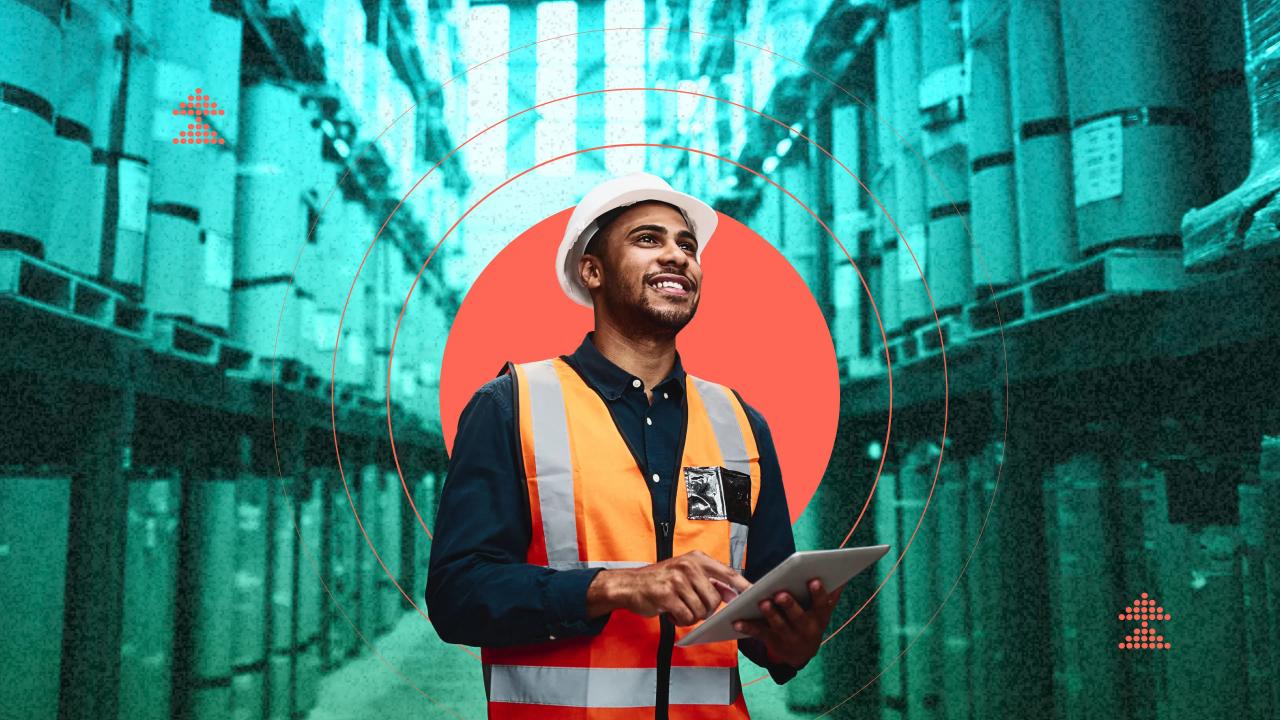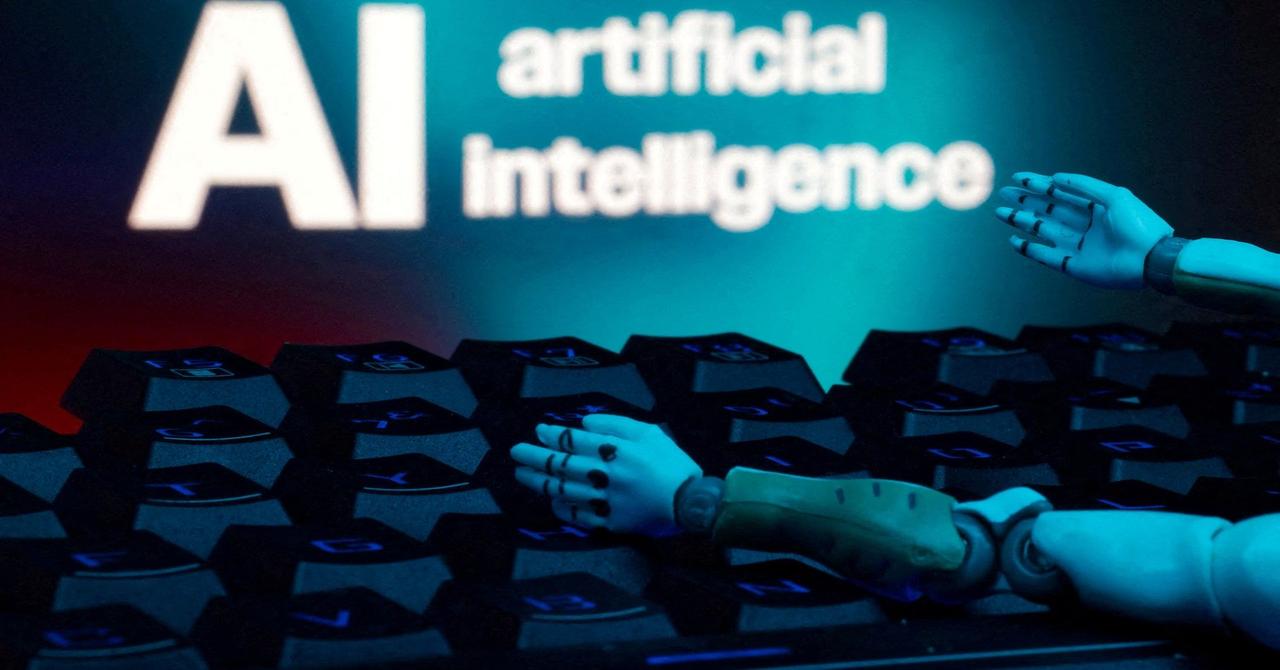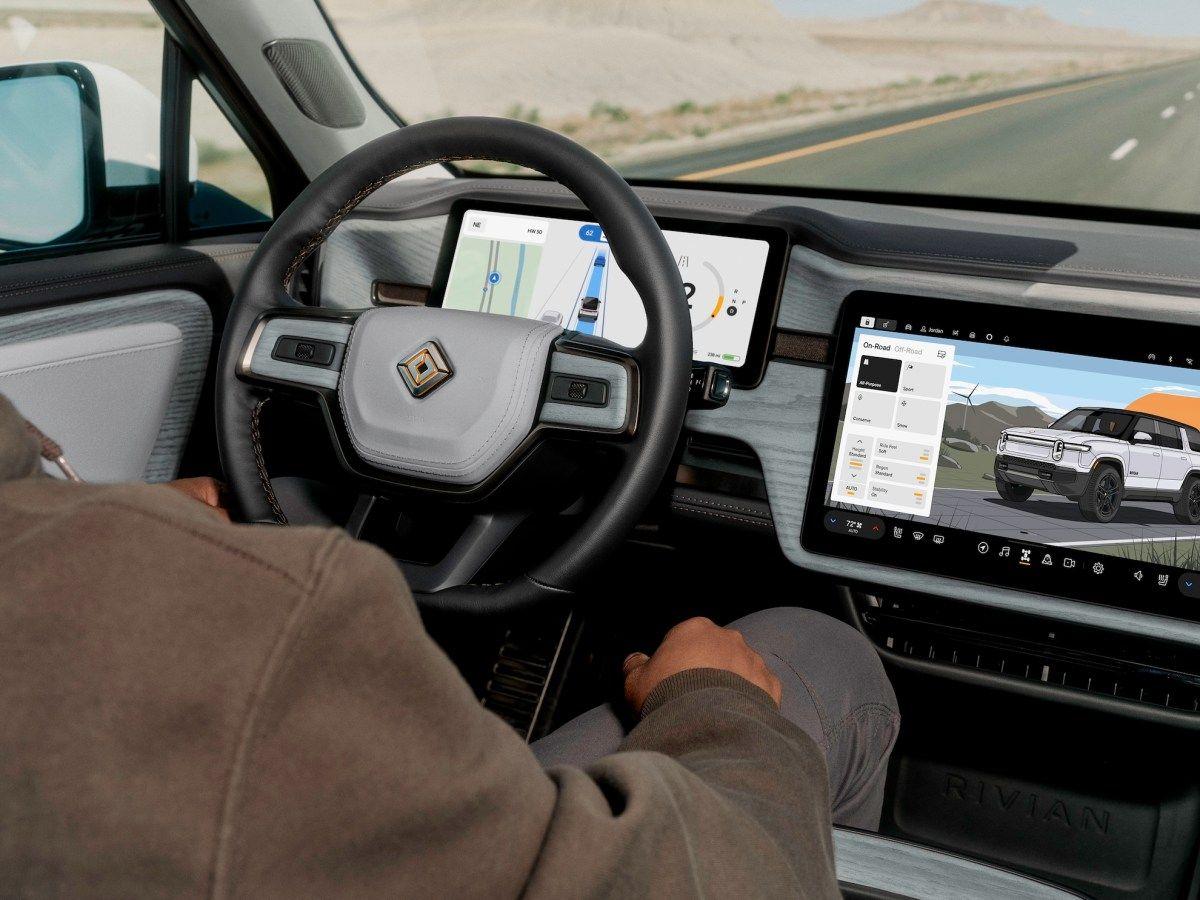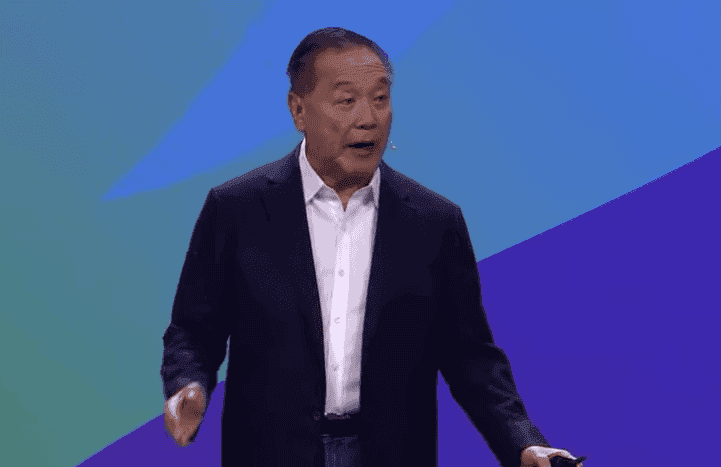AI Revolutionizes Supply Chain Management Amid Global Trade Uncertainties
3 Sources
3 Sources
[1]
Just in time? Manufacturers turn to AI to weather tariff storm
LONDON, Aug 13 (Reuters) - Manufacturers like U.S. lawnmower maker The Toro Company (TTC.N), opens new tab are not panicking at the prospect of U.S. President Donald Trump's global trade tariffs. Despite five years of dramatic supply disruptions, opens new tab, from the COVID pandemic to today's trade wars, Toro is resisting any temptation to stack its warehouses to the rafters. "We are at probably pre-pandemic inventory levels," says its chief supply-chain manager, Kevin Carpenter, looking relaxed in front of a whiteboard at his office in Minneapolis. "I mean 2019. I think everybody will be at a 2019 level." Among U.S. manufacturers, inventories have roller-coasted this year as they rushed to beat Trump's deadlines for tariff hikes, only to see them repeatedly delayed. But since their post-pandemic expansion, inventories have mostly contracted, according to U.S. Institute for Supply Management data. Instead, "just in time" inventory management - which aims to increase efficiency and reduce waste by ordering goods only as they are needed - is back. But how can firms run lean inventories even as tariffs fluctuate, export bans come out of the blue, and conflict rages? One of the answers, they say, is artificial intelligence. Carpenter says he uses AI to digest the daily stream of news that could impact Toro's business, from Trump's latest social media posts to steel prices, into a custom-made podcast that he listens to each morning. His team also uses generative AI to sieve an ocean of data and to suggest when and how many components to buy from whom. It is a boom industry. Spending on software that includes generative AI for supply chains, capable of learning and even performing tasks on its own, could hit $55 billion by 2029, up from $2.7 billion now, according to U.S. research firm Gartner, driven in part by global uncertainties. HYPE "The tool just puts up in front of you: 'I think you can take 100 tonnes of this product from this plant to transfer it to that plant. And you just hit accept if that makes sense (to you)," McKinsey supply chain consultant Matt Jochim said. The biggest providers of overall supply chain software by revenue are Germany's SAP (SAPG.DE), opens new tab, U.S. firms Oracle (ORCL.N), opens new tab, Coupa and Microsoft (MSFT.O), opens new tab and Blue Yonder, a unit of Panasonic (6752.T), opens new tab, according to Gartner. Generative AI is in its infancy, with most firms still piloting it spending modest amounts, industry experts say. Those investments can climb to tens of millions of dollars when deployed at scale, including the use of tools known as AI agents, which make their own decisions and often need costly upgrades to data management and other IT systems, they said. In commenting for this article, SAP, Oracle, Coupa, Microsoft and Blue Yonder described strong growth for generative AI solutions for supply chains without giving numbers. At U.S. supply chain consultancy GEP, which sells AI tools like this, Trump's tariffs are helping to drive demand. "The tariff volatility has been big," says GEP consultant Mukund Acharya, an expert in retail industry supply chains. SAP said the uncertainty was driving technology take-up. "That's how it was during the financial crisis, Brexit and COVID. And it's what we're seeing now," Richard Howells, SAP vice president and supply chain specialist, said in a statement. An AI agent can sift real-time news feeds on changing tariff scenarios, assess contract renewal dates and a myriad of other data points and come up with a suggested plan of action. But supply chain experts warn of AI hype, saying a lot of money will be wasted on a vain hope that AI can work miracles. "AI is really a powerful enabler for supply chain resilience, but it's not a silver bullet," says Minna Aila, communications chief at Finnish crane-maker Konecranes and member of a business board that advises the OECD on issues including supply chain resilience. "I'm still looking forward to the day when AI can predict terrorist attacks that are at sea, for instance." Konecranes' (KCRA.HE), opens new tab logistics partners are deploying AI on more mundane data, like weather forecasts. The company makes port cranes that are up to 106 metres (348 ft) high when assembled. When shipping them, AI marries weather forecasts with data like bridge heights to optimise the route. "To ship those across oceans, you do have to take into consideration weather," Aila says. RISING COSTS By keeping inventories low, firms can bolster profit margins that are under pressure from rising costs. Every component or finished product sitting on a shelf is capital tied up, incurring finance and storage costs and at risk of obsolescence. McKinsey has been surveying supply-chain executives since the pandemic. Its most recent survey showed that respondents relying on bigger inventory to cushion disruptions fell to 34% last year from 60% in 2022. Early responses from its upcoming 2025 survey suggest a similar picture, Jochim said. Gartner supply chain analyst Noha Tohamy says that without AI, companies would be slower to react and be more likely to be drawn into building up inventories. "When supply chain organisations don't have that visibility and don't really understand the uncertainty, we go for inventory buffering," Tohamy says. But AI agents won't put supply chain managers out of work, not yet, consultants say. Humans still need to make strategic and big tactical decisions, leaving AI agents to do more routine tasks like ordering and scheduling production maintenance. Toro supply chain chief Carpenter says that without AI, supply chain managers might need to run bigger teams as well. Is he worried that AI is coming for his job one day? "I hope it doesn't take it until my kids get through college!" Reporting by Mark Bendeich; Editing by Sharon Singleton Our Standards: The Thomson Reuters Trust Principles., opens new tab
[2]
Just in time? Manufacturers turn to AI to weather tariff storm
Facing trade uncertainties and tariff fluctuations, manufacturers like Toro are embracing AI to optimize supply chains and reduce reliance on large inventories. AI tools help digest news, analyze data, and suggest optimal component purchases, driving a surge in spending on AI-powered supply chain software. Manufacturers like U.S. lawnmower maker The Toro Company are not panicking at the prospect of U.S. President Donald Trump's global trade tariffs. Despite five years of dramatic supply disruptions, from the COVID pandemic to today's trade wars, Toro is resisting any temptation to stack its warehouses to the rafters. "We are at probably pre-pandemic inventory levels," says its chief supply-chain manager, Kevin Carpenter, looking relaxed in front of a whiteboard at his office in Minneapolis. "I mean 2019. I think everybody will be at a 2019 level." Among U.S. manufacturers, inventories have roller-coasted this year as they rushed to beat Trump's deadlines for tariff hikes, only to see them repeatedly delayed. But since their post-pandemic expansion, inventories have mostly contracted, according to U.S. Institute for Supply Management data. Instead, "just in time" inventory management - which aims to increase efficiency and reduce waste by ordering goods only as they are needed - is back. But how can firms run lean inventories even as tariffs fluctuate, export bans come out of the blue, and conflict rages? One of the answers, they say, is artificial intelligence. Carpenter says he uses AI to digest the daily stream of news that could impact Toro's business, from Trump's latest social media posts to steel prices, into a custom-made podcast that he listens to each morning. His team also uses generative AI to sieve an ocean of data and to suggest when and how many components to buy from whom. It is a boom industry. Spending on software that includes generative AI for supply chains, capable of learning and even performing tasks on its own, could hit $55 billion by 2029, up from $2.7 billion now, according to U.S. research firm Gartner, driven in part by global uncertainties. HYPE "The tool just puts up in front of you: 'I think you can take 100 tonnes of this product from this plant to transfer it to that plant. And you just hit accept if that makes sense (to you)," McKinsey supply chain consultant Matt Jochim said. The biggest providers of overall supply chain software by revenue are Germany's SAP, U.S. firms Oracle, Coupa and Microsoft and Blue Yonder, a unit of Panasonic, according to Gartner. Generative AI is in its infancy, with most firms still piloting it spending modest amounts, industry experts say. Those investments can climb to tens of millions of dollars when deployed at scale, including the use of tools known as AI agents, which make their own decisions and often need costly upgrades to data management and other IT systems, they said. In commenting for this article, SAP, Oracle, Coupa, Microsoft and Blue Yonder described strong growth for generative AI solutions for supply chains without giving numbers. At U.S. supply chain consultancy GEP, which sells AI tools like this, Trump's tariffs are helping to drive demand. "The tariff volatility has been big," says GEP consultant Mukund Acharya, an expert in retail industry supply chains. SAP said the uncertainty was driving technology take-up. "That's how it was during the financial crisis, Brexit and COVID. And it's what we're seeing now," Richard Howells, SAP vice president and supply chain specialist, said in a statement. An AI agent can sift real-time news feeds on changing tariff scenarios, assess contract renewal dates and a myriad of other data points and come up with a suggested plan of action. But supply chain experts warn of AI hype, saying a lot of money will be wasted on a vain hope that AI can work miracles. "AI is really a powerful enabler for supply chain resilience, but it's not a silver bullet," says Minna Aila, communications chief at Finnish crane-maker Konecranes and member of a business board that advises the OECD on issues including supply chain resilience. "I'm still looking forward to the day when AI can predict terrorist attacks that are at sea, for instance." Konecranes' logistics partners are deploying AI on more mundane data, like weather forecasts. The company makes port cranes that are up to 106 metres (348 ft) high when assembled. When shipping them, AI marries weather forecasts with data like bridge heights to optimise the route. "To ship those across oceans, you do have to take into consideration weather," Aila says. RISING COSTS By keeping inventories low, firms can bolster profit margins that are under pressure from rising costs. Every component or finished product sitting on a shelf is capital tied up, incurring finance and storage costs and at risk of obsolescence. McKinsey has been surveying supply-chain executives since the pandemic. Its most recent survey showed that respondents relying on bigger inventory to cushion disruptions fell to 34% last year from 60% in 2022. Early responses from its upcoming 2025 survey suggest a similar picture, Jochim said. Gartner supply chain analyst Noha Tohamy says that without AI, companies would be slower to react and be more likely to be drawn into building up inventories. "When supply chain organisations don't have that visibility and don't really understand the uncertainty, we go for inventory buffering," Tohamy says. But AI agents won't put supply chain managers out of work, not yet, consultants say. Humans still need to make strategic and big tactical decisions, leaving AI agents to do more routine tasks like ordering and scheduling production maintenance. Toro supply chain chief Carpenter says that without AI, supply chain managers might need to run bigger teams as well. Is he worried that AI is coming for his job one day? "I hope it doesn't take it until my kids get through college!"
[3]
Artificial intelligence to the rescue of manufacturers facing the tariff storm
At The Toro Company, a Minnesota-based lawn mower manufacturer, supply chain director Kevin Carpenter says he is operating at inventory levels close to those of 2019, a far cry from the overstocking seen after the pandemic. To achieve this, his team relies on generative AI tools that can sort through a massive stream of data, from steel prices to presidential announcements, and recommend when and from whom to buy components. According to Gartner, global spending on software solutions integrating generative AI for supply chains could reach $55bn by 2029, up from $2.7bn today, driven by economic and geopolitical uncertainty. SAP, Oracle, Coupa, Microsoft, and Blue Yonder (a Panasonic subsidiary) are among the leading sector players. Consulting firms such as McKinsey and GEP have found that price volatility is driving demand for these technologies. The most advanced systems, known as "AI agents," can continuously analyze customs scenarios, anticipate counterfeit renewals, and propose an action plan, although experts warn against excessive enthusiasm: AI is not a miracle solution. For groups such as Konecranes, a Finnish manufacturer of port cranes, AI is already optimizing complex tasks such as logistics planning by cross-referencing weather forecasts and transport constraints. By reducing inventory, companies limit their financing and storage costs while reducing the risk of obsolescence. McKinsey notes that in 2024, only 34% of supply chain executives relied on high inventory levels to protect themselves from disruptions, compared to 60% in 2022. While AI can increase responsiveness, strategic decisions remain human for now. Kevin Carpenter jokes, "I hope it doesn't take my job before my kids finish college."
Share
Share
Copy Link
Manufacturers are turning to AI-powered tools to optimize inventory management and navigate trade tariffs, with spending on AI-enabled supply chain software expected to surge to $55 billion by 2029.
AI Transforms Supply Chain Management Amid Global Trade Uncertainties
In the face of fluctuating tariffs and global trade uncertainties, manufacturers are increasingly turning to artificial intelligence (AI) to optimize their supply chains and maintain lean inventories. This shift marks a return to "just-in-time" inventory management, with AI playing a crucial role in navigating complex global trade landscapes
1
2
.
Source: Market Screener
The Toro Company: A Case Study in AI-Driven Supply Chain Management
The Toro Company, a U.S. lawnmower manufacturer, exemplifies this trend. Kevin Carpenter, Toro's chief supply-chain manager, reports that the company has returned to pre-pandemic inventory levels, resisting the urge to overstock despite ongoing trade uncertainties
1
. Carpenter utilizes AI to process daily news streams, including presidential social media posts and steel prices, into a custom podcast for his morning briefing. His team also employs generative AI to analyze vast amounts of data and suggest optimal component purchasing strategies1
2
.The Growing AI Market in Supply Chain Management
The adoption of AI in supply chain management is rapidly expanding. Gartner, a U.S. research firm, predicts that spending on software incorporating generative AI for supply chains could reach $55 billion by 2029, up from $2.7 billion currently
1
3
. This growth is partly driven by global uncertainties and the need for more efficient inventory management.Key Players and AI Applications
Major providers of supply chain software with AI capabilities include SAP, Oracle, Coupa, Microsoft, and Blue Yonder (a Panasonic unit)
1
. These companies are reporting strong growth in demand for their AI solutions, although specific numbers are not disclosed2
.AI agents can perform a variety of tasks, from sifting through real-time news feeds on changing tariff scenarios to assessing contract renewal dates and suggesting action plans
1
. For instance, McKinsey supply chain consultant Matt Jochim describes AI tools that can recommend transferring specific quantities of products between plants1
.
Source: ET
Related Stories
Benefits and Limitations of AI in Supply Chain Management
By maintaining lower inventories, companies can improve profit margins and reduce costs associated with storage and potential obsolescence
1
. Gartner supply chain analyst Noha Tohamy notes that without AI, companies would be slower to react and more likely to build up excessive inventories1
.However, experts caution against viewing AI as a panacea. Minna Aila, communications chief at Finnish crane-maker Konecranes, emphasizes that while AI is a powerful enabler for supply chain resilience, it is not a silver bullet
1
2
. The technology is still limited in its ability to predict extreme events or make high-level strategic decisions1
.The Human Element in AI-Driven Supply Chains

Source: Reuters
Despite the increasing role of AI, human expertise remains crucial. Supply chain managers are still responsible for making strategic and significant tactical decisions, while AI handles more routine tasks like ordering and scheduling production maintenance
1
2
. This synergy between human insight and AI capabilities is expected to drive the future of supply chain management in an increasingly complex global trade environment.References
Summarized by
Navi
Related Stories
AI Revolutionizes Global Supply Chains: Enhancing Efficiency and Resilience
30 Jul 2025•Technology

Agentic AI turns supply chain planning into continuous, autonomous systems that respond in minutes
02 Dec 2025•Technology

AI Boom Drives Tech Earnings While Consumer Sectors Struggle Amid Trade Uncertainties
25 Jul 2025•Business and Economy

Recent Highlights
1
OpenAI releases GPT-5.2 AI model after code red memo targets Google's Gemini 3 threat
Technology

2
Disney invests $1 billion in OpenAI, licenses 200+ characters for Sora AI video generator
Technology

3
OpenAI faces wrongful death lawsuit after ChatGPT allegedly fueled murder-suicide tragedy
Policy and Regulation





